Poodle lovers probably know about the variety of colors, but many of them are not recognized by the standards, although regardless of the color of the coat, the poodle remains a poodle and a favorite of its owner.
Only six colors of poodles are prescribed in the FCI standard, but when dogs with different coat colors are crossed, unusual puppies are born. At the same time, it is very difficult to specially breed dogs with unusual hair, this phenomenon is often unpredictable, although if you understand the genetics of colors, then sometimes you can achieve the desired result. One of the main requirements is that the coat must be evenly colored.
Standard Poodle Colors
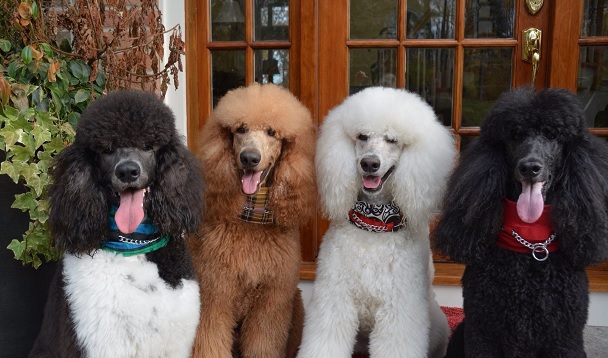
Black Poodles
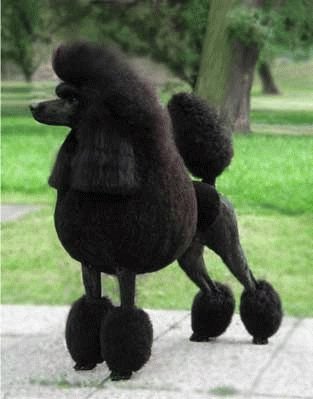
Black color is a classic, while many owners of black poodles note that the quality of their coat is much better than that of dogs of other colors. The ideal poodle has a deep black coat, no brown or gray shades, and no white or silver guard hair. The skin looks gray and even tinged with blue. The nose, rims of the eyes, lips, claws are black, and the eyes are always brown.
White Poodles
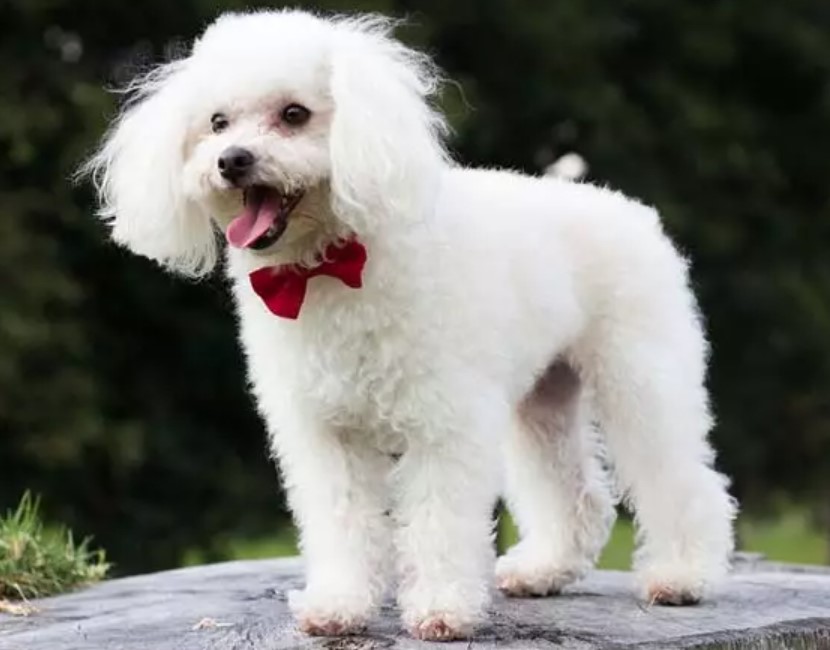
White poodles are also quite common, they have a number of features. Most puppies are born with cream or apricot patches on the chest, ears, lower limbs, but with age, the coat turns white. The skin is pink or truffle (mottled). The nose, the rim of the eyes, the claws are black, the eyes are always brown. Puppies can be born with pink noses, paw pads, but their nose darkens with age. It happens that white puppies are born to dogs with colored hair, but such puppies are considered full-fledged, and in the future, they will not give colored offspring.
Some potential poodle owners worry that the white haired poodles will get dirtier faster than a darker hair poodle. While it is true you may notice some dirt more easily on a lighter coat, there are also ways to keep your Poodle’s coat white, including special shampoos.
Silver Poodles
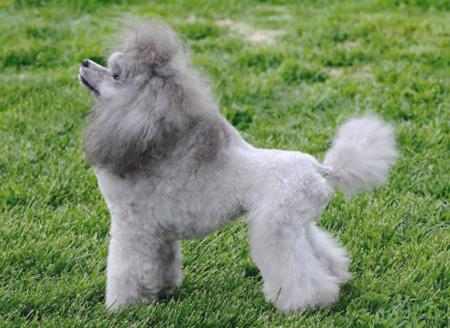
The silvery color of the poodles is characterized by shades of gray, but the shades should not be close to white or black. Silver is a very complex color that takes 2-3 years to develop. Puppies are born black, the color of the coat gradually changes. At 6 weeks of age, the puppies should have a silvery muzzle and limbs. To correctly determine the color, you need to shave the poodle, then a silvery shade of the hair at the root will be noticeable. The outline of the eyes, the nose, the lips are black, and the eyes are always dark brown. Skin color to match the coat.
Brown or Chocolate Poodles
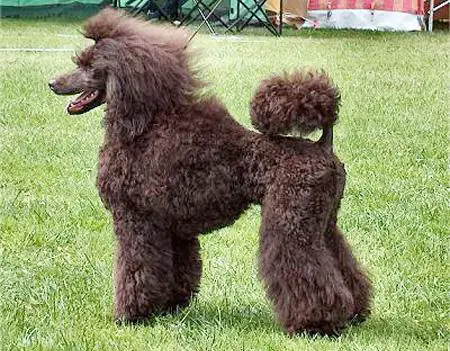
Brown or chocolate poodles are characterized by a dark brown coat color without beige or light brown shades and not close to black. On the ears, the ends of the hair are lighter. Leather to match the coat. Eye rims, lips, claws are dark brown or black, the nose is liver-colored, while at exhibitions preference is given to poodles with a darker nose. The eyes are dark brown or dark amber. As puppies grow older, they lose their color intensity, then confusion in colors often arises.
Apricot Poodles
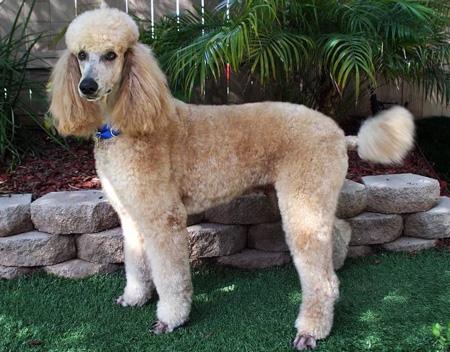
Apricot poodles differ in coats of various shades of apricot color, but shades should not be close to white or dark brown. The ears are slightly darker than the main color of the coat. Puppies are born with a darker shade of apricot, but within two years the color is finally formed, the coat lightens. Apricot poodles often lose their color saturation and become creamy with age. The skin is white or pink in color, with shades of gray or blue. Nose, eye rim, lips, claws black or brown, brown eyes.
Red Poodles
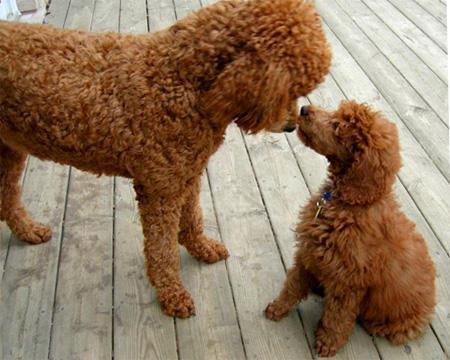
Red poodles have a deep dark apricot or mahogany color. With age, the coat may take on a lighter shade. Skin color to match the coat. The rim of the eyes is brown, the pigmentation of the lips is dark brown to almost black, the nose is black or brown. By the way, puppies are born with black noses, but with age, some of the noses brighten. The eyes are brown, while the brown-nosed poodles have lighter eyes. The nails are dark brown or black.
It should be noted that America, Germany, the Czech Republic, and some other countries have officially recognized several more colors of the poodle’s coat: harlequin, black and tan. By the way, the cost of phantom poodles and harlequins is higher than the cost of individuals with a standard coat.
Poodles with Harlequin Coat Colors
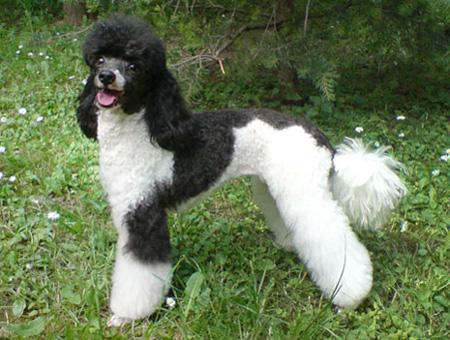
Harlequin – the main color is white (about 60%), while the border between white and black is clearly visible. Usually the line from the bridge of the nose to the first cervical vertebra (not always), the limbs, chest, belly are white, the head is black, there are 2-3 black spots on the back, and the tail can be completely or partially (at the base or at the tip) black. The outline of the eyes, nose, lips, claws are black, eyes are dark brown. Most often, such puppies are born as a result of mating between white with light brown skin and black or gray poodles with the spotting gene.
Poodles with Phantom Coat Colors
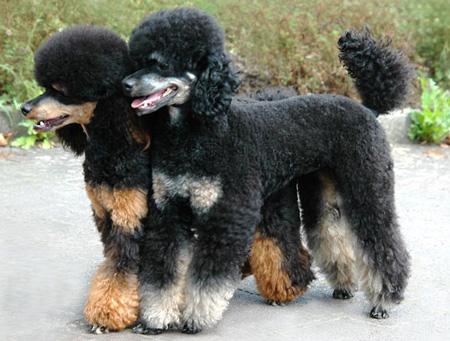
In fact, black and tan is a phantom color, but it includes not only black and tan poodles, but also poodles, whose main coat color is brown, red, silver. Therefore, the description will be general – the main color is dark (about 80%), there are burn marks on the eyebrows, muzzle, chest, along the edge of the ears, on all limbs, around the anus. Black tan markings are apricot, gray, red, silver, cream, brown. The browns have apricot tan marks, while the reds have lighter shades of red and apricot. The silvery tan markings of various shades of gray and cream. Pigmentation, eye, and skin color depending on the base coat color.
Non-standard Poodle Coat Colors
Brindle Poodles
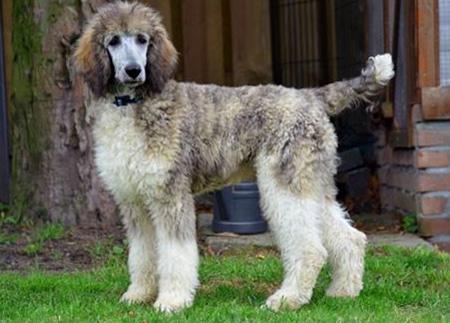
Brindle poodles are distinguished by the presence of a striped pattern, and the main color can be either dark or light. Light or dark hair is colored evenly along its entire length. The pattern is distinguishable regardless of the length of the coat, that is, even if the hair is short.
Sable Poodles
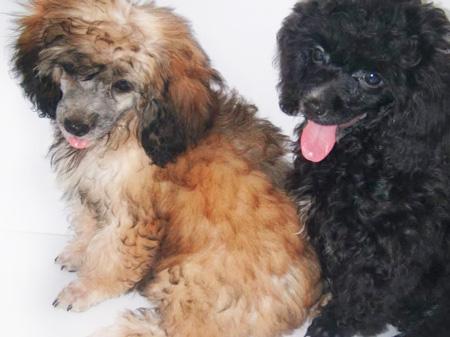
The sable color, also called the color of burnt toast (bread), is characterized by a light brown coat, but the tips of the hair are black or dark brown. The color of the coat is not permanent, that is, if you carry out a haircut, then the dark ends will be cut off, and the poodle will no longer have a sable coat color. Puppies are born with richer brown coat color, but with age, the hair at the base brightens, acquiring a creamy shade, while the tips remain black, especially noticeable on the ears. Hair with dark ends gives the impression of a dirty coat.
Silver Beige Poodles
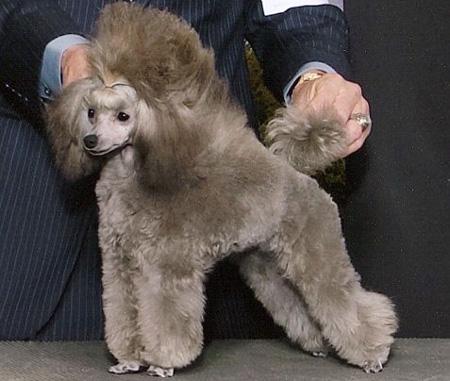
The silvery-beige color is also non-standard, although such poodles look interesting. Puppies are born brown or chocolate, but over time the color develops into a silvery beige. The eyes are dark amber. The rims of the eyes, the lips are pigmented, the nose is black or liver-colored.
Poodles with Coffee-and-milk Coat Colors
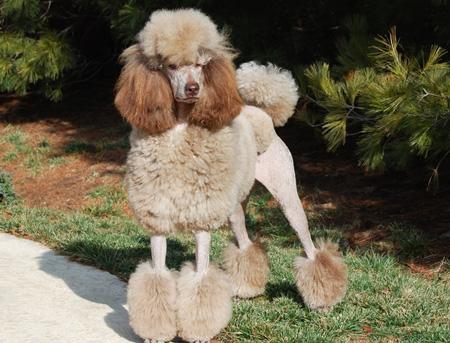
It is easy to confuse the coffee-and-milk coat color with silvery beige, but there are a few differences to be guided by when determining the color. Coffee with milk – a combination of apricot, cream, and chocolate shades. Puppies are born with dark brown coats, but not beige coats. The color is formed within two years. The nose is always liver-colored and the eyes are dark amber.
Cream Poodles
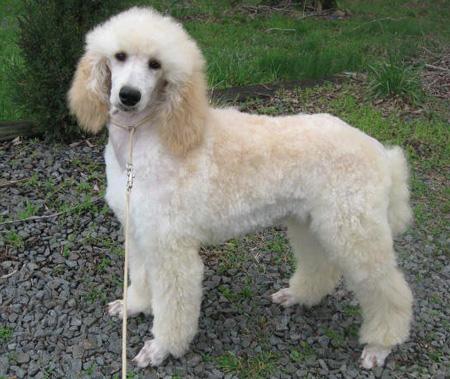
Cream poodles have a coat of champagne or a lighter shade of apricot. Often cream poodles turn white with age. The nose is always black, the rims of the eyes and lips are black, the nails can be black or brown.
Poodles with Blue Coats
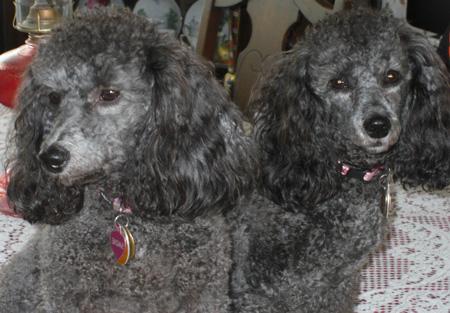
Poodles with blue coats are not really literal. Puppies are born black, but with age, usually by the age of two, the color of the coat fades and becomes bluish. Dark brown eyes, nose, eye rims, black lips.
Poodles with Splash Coats
Splash coat can be of any color, but there are occasional white spots that should cover less than 50% of the total body surface area. Usually, there are white areas on the chest, abdomen, limbs, legs.
Merle Poodles
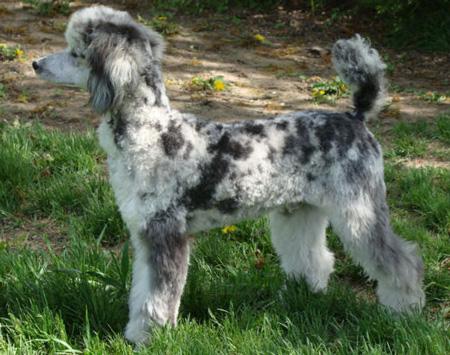
Merle is very rare. The main color can be either dark or light, but there are areas of different sizes (but not very large) of a different contrasting color, there may be blotches.
Two-color Poodles
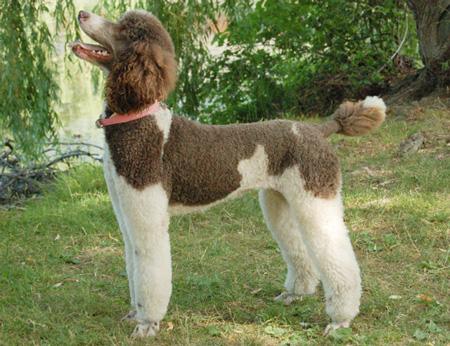
Two-color poodles are distinguished by the fact that their main color is white, there are large and small spots of any other color, most often black or brown, and the spots are located randomly. Some dogs have spots on the ears, tail, and back, while others have spots on the head, nape, and tail. Poodles with dark spots look most impressive.
Of course, there are many colors of poodles, and each unusual color of the coat gives the dog individuality, uniqueness, but it is impossible to recognize all of them. Therefore, if you intend to purchase a pet for exhibitions and a certain color, you should carefully choose a puppy, otherwise, you can raise a dog with completely different coat color. It should be remembered that the color is formed over several years, sometimes nutrition, sunlight, pregnancy, shedding, and other factors affect the color intensity. The lightening of the coat may not occur evenly, in addition, the color of the skin may change, and the shade of the coat changes with the color of the skin.

